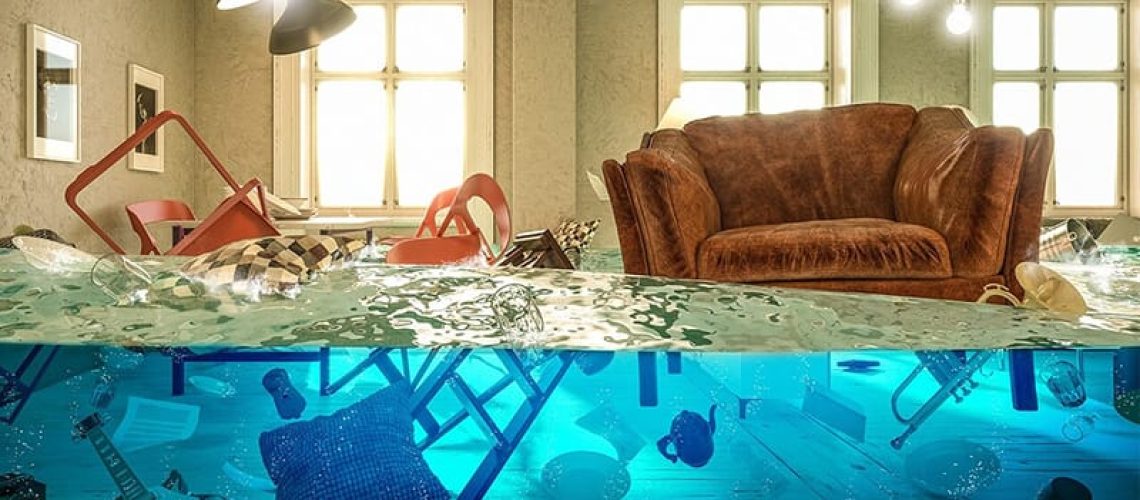Water, an essential element of life, can also be a source of potential hazards within the home. Plumbing leaks and water damage pose not only structural concerns but also safety risks that may go unnoticed without the discerning eye of a home inspector. In this comprehensive guide, we will explore the safety issues that home inspectors frequently encounter related to plumbing leaks and water damage, emphasizing the critical importance of addressing these issues for a secure and healthy living environment.
1. Structural Weakening and Foundation Damage
Issue: Persistent Water Intrusion Compromising Structural Integrity
One of the most serious safety concerns arising from plumbing leaks and water damage is the potential compromise of the home’s structural integrity. Water intrusion into walls, ceilings, or the foundation can weaken the structure over time, leading to significant safety hazards.
Why It Matters:
Structural weakening can result in collapses or compromised load-bearing capabilities. Home inspectors prioritize identifying areas of persistent water intrusion to prevent long-term structural damage and maintain the safety of the home.
2. Mold and Indoor Air Quality Issues
Issue: Mold Growth Due to Persistent Moisture
Home inspectors frequently uncover mold growth in areas affected by plumbing leaks or water damage. Mold can have adverse effects on indoor air quality, leading to respiratory issues and other health concerns.
Why It Matters:
Mold spores released into the air can pose health risks, particularly for individuals with respiratory conditions or allergies. Addressing water damage promptly and implementing proper remediation measures is crucial for maintaining a healthy indoor environment.
3. Electrical Hazards
Issue: Water Intrusion into Electrical Systems
Plumbing leaks can pose a direct threat to electrical systems if water reaches outlets, wiring, or electrical panels. This creates a hazardous situation with the potential for electrical shocks, short circuits, or even fires.
Why It Matters:
Electrical hazards from water intrusion can result in injuries, property damage, or even fatalities. Home inspectors pay close attention to areas where plumbing leaks may intersect with electrical components, recommending immediate repairs to mitigate risks.
4. Slip and Fall Hazards
Issue: Water Accumulation Creating Slippery Surfaces
Water leaks can lead to standing water or wet surfaces, creating slip and fall hazards within the home. This is especially common in bathrooms, kitchens, or basements affected by plumbing issues.
Why It Matters:
Slip and fall accidents can cause injuries ranging from minor bruises to severe fractures. Home inspectors focus on identifying water-related hazards, emphasizing the importance of addressing leaks promptly and implementing proper drainage solutions.
5. Sewage Backup and Contamination
Issue: Plumbing Leaks Leading to Sewage Backup
In cases of plumbing leaks involving sewage lines, the risk of sewage backup becomes a significant safety concern. Contamination from raw sewage poses severe health risks to occupants.
Why It Matters:
Exposure to sewage can lead to infections, gastrointestinal issues, and other health problems. Home inspectors prioritize identifying and addressing plumbing leaks that involve sewage lines to prevent the potential hazards associated with contamination.
6. Structural Wood Rot
Issue: Prolonged Water Exposure Causing Wood Rot
Wood components exposed to persistent water leaks are susceptible to rot and decay. This compromises the strength of structural elements, posing safety risks within the home.
Why It Matters:
Wood rot weakens the structural components of a home, increasing the risk of collapses or failures. Home inspectors focus on identifying areas with wood rot, and recommending repairs to ensure the continued stability of the structure.
7. Appliance and Fixture Damage
Issue: Water Leaks Damaging Appliances and Fixtures
Plumbing leaks can damage appliances, fixtures, and other household items. This not only affects their functionality but may also create safety hazards if electrical components are involved.
Why It Matters:
Damaged appliances or fixtures may malfunction, leading to electrical or mechanical hazards. Home inspectors examine the condition of appliances affected by water leaks, emphasizing the need for repairs or replacements to ensure safety.
8. Deterioration of Insulation Materials
Issue: Water Damage Compromising Insulation
Water leaks can compromise the insulation materials within walls or attics. Deteriorated insulation not only reduces energy efficiency but can also create safety issues, especially in terms of fire hazards.
Why It Matters:
Damaged insulation may expose electrical wiring or create conditions conducive to fires. Home inspectors assess the condition of insulation materials, recommending repairs or replacements to maintain both safety and energy efficiency.
9. Compromised Gas Lines and Appliances
Issue: Water Damage Affecting Gas Lines and Appliances
Water leaks in proximity to gas lines or appliances can lead to corrosion, rust, or other damage. This compromises the functionality and safety of gas-powered systems within the home.
Why It Matters:
Compromised gas lines or appliances can result in gas leaks, fire hazards, or inefficient operation. Home inspectors pay attention to areas where water damage may affect gas systems, recommending repairs to prevent safety risks.
10. Hidden Structural Weaknesses
Issue: Concealed Water Damage Masking Structural Issues
In some cases, water damage may be concealed behind walls or within the structure, masking hidden weaknesses. This poses a safety risk as underlying structural problems may go unnoticed.
Why It Matters:
Hidden structural weaknesses can lead to unexpected failures or collapses. Home inspectors utilize various tools and techniques to identify concealed water damage and potential structural issues, ensuring a thorough assessment of safety concerns.
Conclusion
Plumbing leaks and water damage may start as seemingly minor issues but can escalate into significant safety hazards if left unaddressed. Home inspectors, with their meticulous examinations, play a critical role in identifying these potential dangers and recommending prompt repairs and remediation. From structural weakening to electrical hazards and health risks associated with mold and sewage, addressing these common safety concerns is paramount for creating a secure and healthy living environment. In the realm of homeownership, proactive measures, regular inspections, and timely repairs are key to mitigating the risks associated with plumbing leaks and water damage, ensuring the safety and well-being of occupants.
To learn more about the most common safety issues discovered by home inspectors, check out our article “Safeguarding Homes: Common Safety Issues Uncovered by Home Inspectors“.


